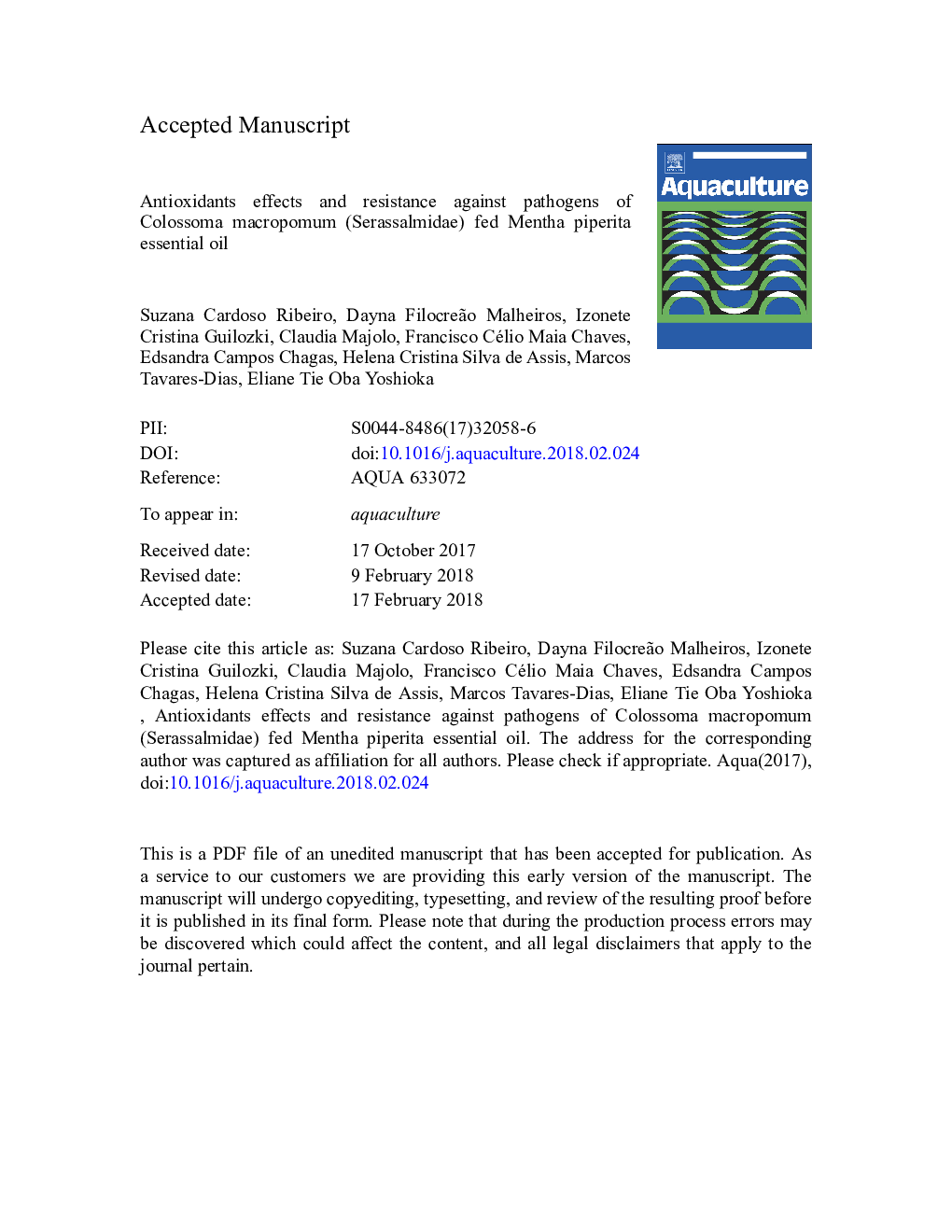| Article ID | Journal | Published Year | Pages | File Type |
|---|---|---|---|---|
| 8493319 | Aquaculture | 2018 | 27 Pages |
Abstract
Immunostimulants in farmed fish diets has been considered an effective approach to health management. This study aimed to assess antioxidant effects and resistance against pathogens of Colossoma macropomum (tambaqui) fed essential oil (EO) of M. piperita at 0%, 0.5%, 1.0% and 1.5% kgâ1 commercial feed during 30â¯days. Tambaqui were challenged with Aeromonas hydrophila and did not present clinical signs of alterations. Higher hepatic catalase activity was observed in fish fed 1.0% of M. piperita EO, compared with 1.5%. Renal superoxide dismutase and glutathione peroxidase decreased in the fish fed M. piperita EO. Hepatic and renal lipid hydroperoxide increased among fish fed diets with 1.0 and 1.5% of EO. Tambaqui fed 1.0% of M. piperita EO showed respiratory activity increase, compared with 0.5%. Monocytes and PAS-GL were abundant in fish fed higher EO concentrations. Reduction in monogenoideans abundance was observed in fish fed 0.5 and 1.0% of EO. Although anti-helminth effects were observed, M. piperita EO in tambaqui diet did not promote leukocytes and lysozyme activity increases at the concentrations assessed. It can be suggested that other concentrations should be tested in future studies, as the combined use with other products, such as immunostimulants and probiotics.
Related Topics
Life Sciences
Agricultural and Biological Sciences
Aquatic Science
Authors
Suzana Cardoso Ribeiro, Dayna Filocreão Malheiros, Izonete Cristina Guilozki, Claudia Majolo, Francisco Célio Maia Chaves, Edsandra Campos Chagas, Helena Cristina Silva de Assis, Marcos Tavares-Dias, Eliane Tie Oba Yoshioka,
